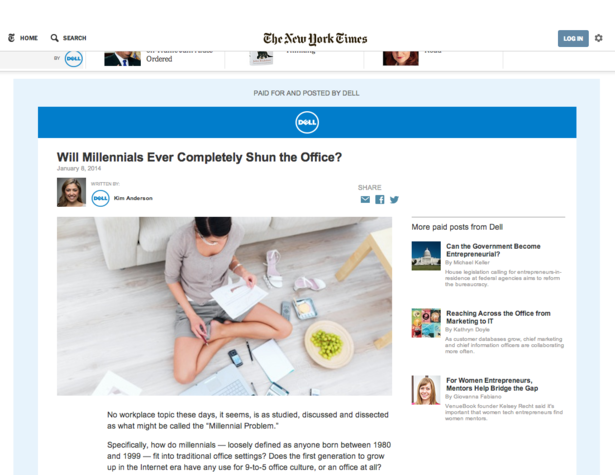Mobile ads: 6 formats to get you thinking.
It seems to me that recent changes in the digital landscape warrant taking a closer look at mobile advertising. Facebook’s acquisition of Whatsapp caused us all to hold our breaths. What would the social media giant do with this home-grown indie favourite? We all dreaded one thing in particular: ham-fisted, intrusive mobile advertising.
Happily, it’s not as bad as we feared. Huge growth in mobile advertising has had an unexpected side effect. The dizzying array of ways in which content can be viewed is forcing ad buyers to work harder in new and interesting ad formats.
Filtering
The majority of us are now using tablets or smartphones with internet browsing capabilities. Mobile and responsive versions of websites have made mobile browsing just as easy, and often more convenient, than surfing on a desktop.
Now that we are used to downloading apps and data from the web, we have also become accustomed to the advertisements that monetise such content for its producers. But, because we have experience of advertisements from lots of other areas of life, we have also gotten used to filtering them out.
Beyond the banners
Mobile advertising has come a long way from the oh-so-ignorable banners of the mid nineties. The industry is gaining momentum at an exponential rate. New formats are the key. It is no co-incidence that those formats we daily manage to filter from our fields of view are also the most familiar.
The reasons for considering mobile advertising are many and varied, but an essential driving fact is that smartphone and tablet traffic makes up a fast-growing proportion of the whole. Today, sites and apps for social media, online retail, and gaming are all accessed from mobile devices as a matter of course.
In this post, I am going to outline 6 mobile advertising formats that reach beyond the humble banner ad.
1. HTML5
HTML5 is the latest specification of the markup language that the web is built from. It is now being used to achieve the things that Flash does, where Flash is not supported. HTML is a great step forward for mobile advertising, thanks to its improved compatability and support for audio, video and animation. It’s still new, and legacy browser support hasn’t been updated, but the possibilities in modern browsers are really broad.
2. Push notifications
Images © Dennis Crowley and Kasia Piekut
Push notifications are a serious improvement on their longer-running counterpart, the promotional SMS. They don’t need to be opened, they take up no memory, and they disappear as quickly as they have come. They can take you to their source app in a swipe or a tap. Apps petition the attention of the user, employing technology native to the device they are using at the time. It’s native content in its most basic format, and there’s more about that next.
3. Native and flat

In the context of a familiar mobile website, we are banner-blind. It could be said that native content and flat design have come hand-in-hand to the rescue of mobile advertisers. The days of banners that bristled with skeuomorphistically designed buttons are drawing to a close, for now.
Apps and websites are favouring flat design – native content is disguised with these simple visuals as content published through the site itself. Notable examples of host sites and apps include Facebook and Buzzfeed. The latter, particularly, has been a real success story for certain brands, because they have invested in sharable content advertising.
4. Video
Video might not have killed the radio star, but it did look for a while like mobile might kill video advertising. Clumsy re-purposing of TV-length ads just doesn’t cut it on the small screen. Coming down from 30 or 60 seconds to 10 is a huge leap, and requires care and consideration to achieve the best results. This video shows how an Alka Seltzer campaign from the 60s and 70s was repurposed for a mobile audience, and you can see a host of successful in-banner video ads here.
5. Geotargeted
Geotargeting operates upon a simple premise: serve the user adverts which are relevant to their current location. Guatemalan shoe retailer Meat Pack used GPS tracking in their official app to give their fans a chance to get a better deal – the video explains all! As users are checking in more often with apps like Twitter, Facebook, Pinterest and Foursquare, they are getting more comfortable with content tailored to location.
6. Beacons – bluetooth/Wifi
Beacons are a different kind of geotargeted mobile advertising. They detect nearby smartphones, often working in conjunction with a specific app, but they use Bluetooth instead of GPS. The beacon is used to serve the smartphone user adverts, coupons, or additional product information.
To the advantage of the operator, they also collect information about the customer, particularly the route they take as they move around the store. (The potential problem is that it takes a lot of steps to get to the point where the ad is popping up on the user’s screen as they near the operator’s location: the consumer has to have the app, the app needs to be open, and Bluetooth has to be activated on their phone.)
–
It’s worth bearing in mind that no single advertising channel is likely to lead you to the holy-grail of conversion rates. Mobile is exciting – and expanding – at the moment, but it should not come at the expense of other formats altogether. An integrated approach allows buyers to take advantage of different user behaviours across all platforms. You never know what potential might lie in diversifying a campaign across a combination of carefully-chosen contact points.
Written by Chloe Marshall
About markmaking*
markmaking*